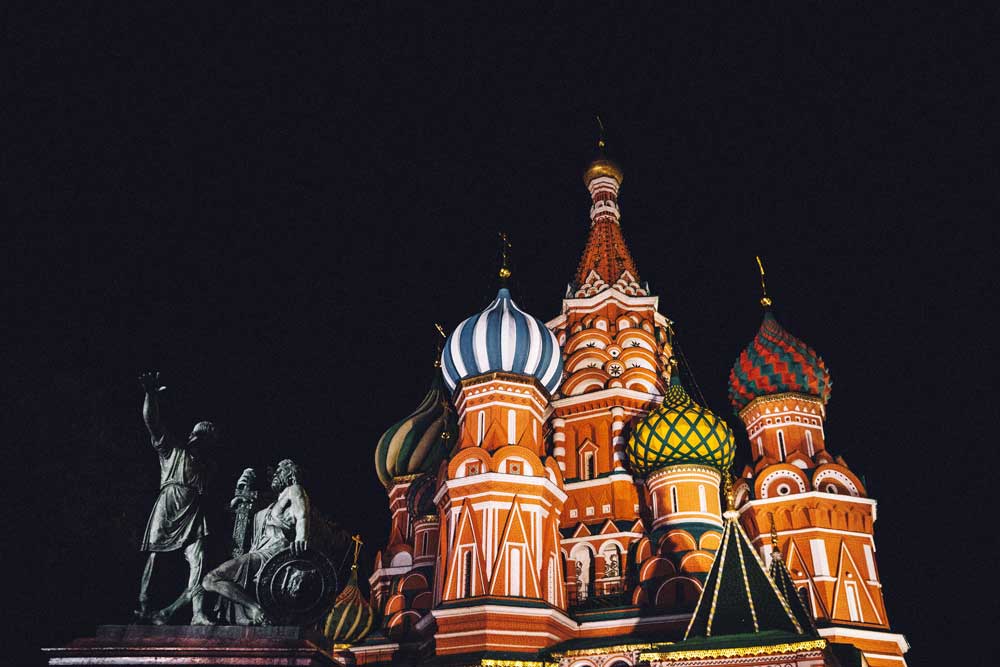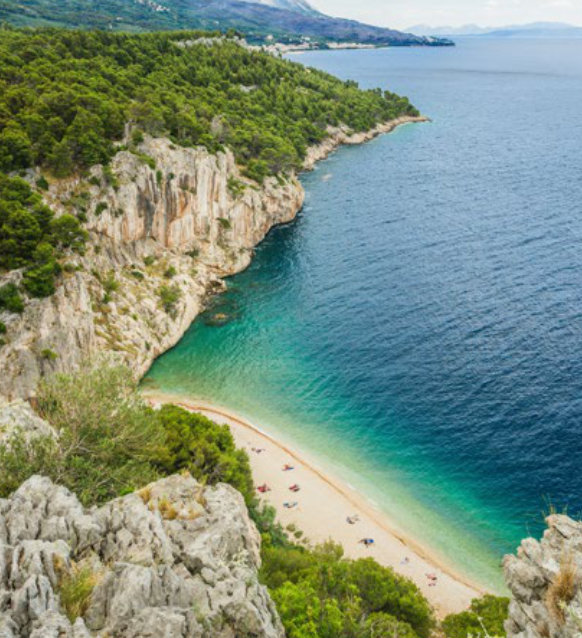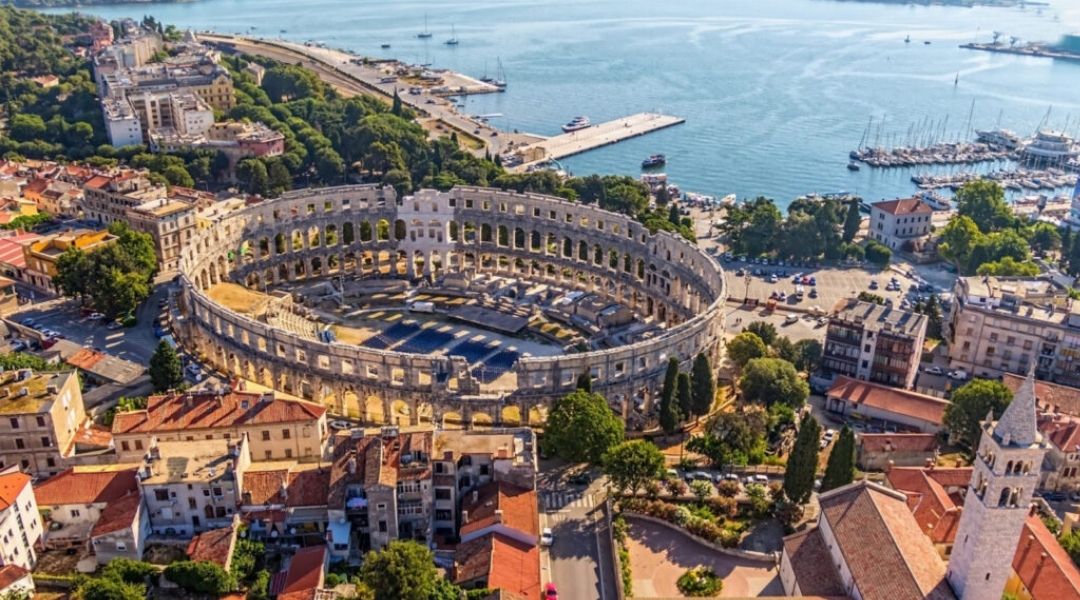If you find yourself over the pond visiting Croatia or Montenegro, why not extend your vacation to mysterious Russia? There are now non-stop flights from Montenegro to Moscow. Only 3 1/2 hours, and you have arrived at one of the largest and alluring cities in the World!
I was born and raised in Siberia for 17 years. Then I moved to Moscow and studied there for five years, later immigrating to the United States. The only regret I have is that I didn’t spend enough time exploring this grand and beautiful city. Moscow is the city that never sleeps, evolving all the time — yet preserving and restoring the charm and history that has accumulated through the centuries, all the while surviving the Russian revolution and soviet era.
If you’ve never been to Moscow, you must go and demystify this fantastic city and experience the Russian culture first hand, especially if you are a history lover.
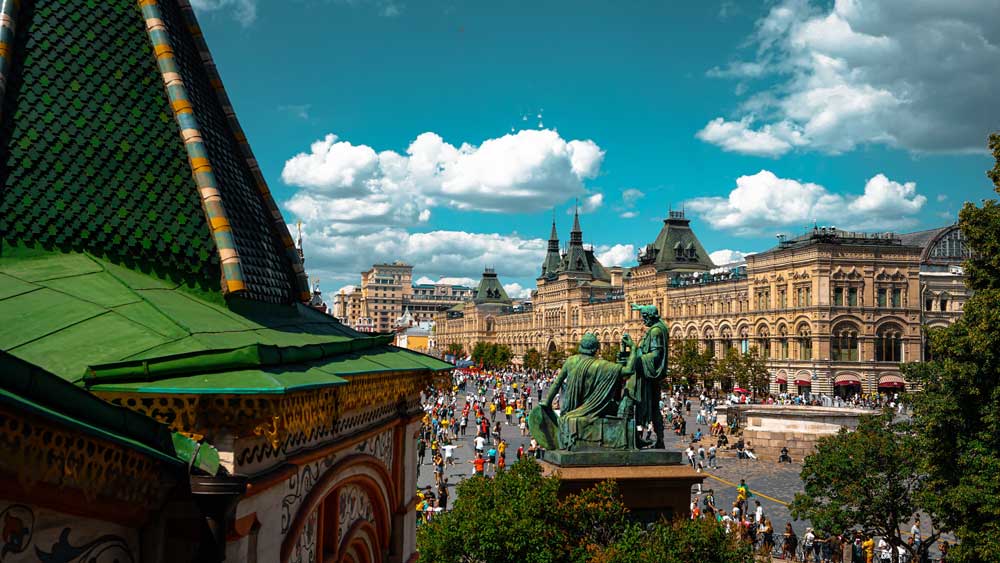
One of the many highlights includes the famous Red Square that has a magnetic effect for all visitors to Moscow. From the Red Square, you can see the most significant buildings in the capital: The Kremlin, GUM department store, the State History Museum, Lenin’s Mausoleum and of course, St Basil’s Cathedral with domes that bloom like an elaborate stone flower planted by the architects of the 16th century.
Not many people realize that the Red Square’s name has nothing to do with Communism or Soviet Russia. The old Russian word for ‘beautiful’ and ‘red’ was the same; Red Square means “Beautiful Square.” All major streets in Moscow radiate from here, and Red Square is the central square of Moscow as well as the symbolic center of all Russia. Its history dates back to the 1490s when a new red-brick Kremlin was built. Merchants from all over the world came to trade here and the square became a big market. On days of great church festivals, there were religious processions here, turning the square into an open-air church.
After the Revolution, the Red Square maintained its importance. Lenin’s mausoleum, where you can still see the body one of the most influential leaders of Soviet times, was built near the Kremlin wall, making the square the ideological center of Red Moscow.
Lenin’s tomb has echoes of the ancient pyramids. The Soviet government may have been atheist, but they believed in the afterlife of Lenin’s ideas much like the Egyptian ideas of afterlife. His body was placed in a glass sarcophagus, and thousands of people came to see it each day. As time went on, Lenin was immortalized by Soviet propaganda.
The first mausoleum was constructed from wood. In 1924, no one was certain if the embalming process would be long-lasting. The government wanted to maintain the body for several months, which would allow people from all over the country to see Lenin. After some time had passed and the embalming technique was proven to be reliable, it was decided to keep Lenin in the mausoleum forever. The architect Shusev constructed a new stone building in 1930, and it is still visited by thousands of visitors a day.
Lenin’s mausoleum was not only used as a tomb. A stand was constructed on top, enabling the communist party leadership to watch the parades from above. The changing of the guard outside the mausoleum has also become a popular attraction with visitors.

The Moscow Kremlin is a magnificent architectural achievement. Its monumental walls, towers, golden-domed cathedrals, and ancient palaces stand high on the Borovitskiy Hill above the Moscow River. It is an entire city within Moscow. Russian princes and tsars lived here a long time ago, but today it is the official residence of the President of Russia.
Kremlin is the Russian word for “fortress” or “citadel.” The founder of Moscow, Prince Yury Dolgoruky, ordered the construction of the first wooden fortress in 1156 on a site known as the town of Moscow, but the word “kremlin” was only first recorded in the 14th century. The Kremlin we see today was constructed in the late 15th century.
Don’t miss your opportunity to visit the Kremlin. The highlights of this UNESCO World Heritage Site include Cathedral Square, Ivan the Great’s Bell Tower, the tsar cannon, and the tsar bell. There are also several separate museums in the Kremlin, with the most famous ones being the Armoury Chamber, which houses royal treasures, and the Diamond Fund. While on Kremlin grounds, you can also visit three 15th-16th century cathedrals. The Assumption Cathedral (1479) was the central place of worship for Moscow and the place of coronation for all the Tsars. The gilded Cathedral of the Annunciation was a domestic royal church; it has several unique icons by Andrey Rublev, one of the greatest medieval Russian painters, and The Cathedral of the Archangel Michael is the final resting place of the first Russian princes and tsars.
An incredible event happened on Red Square in 1987. An amateur German aviator, Mathias Rust, illegally landed near Red Square. How a 19-year old boy managed to break through the Soviet defense system remains a mystery. Rust’s successful flight was a sign that the former Soviet system was not as powerful as believed; it was followed by Mikhail Gorbachev’s reforms that helped to bring an end to the Cold War.
If you’d like to glance behind the Iron Curtain and literally dive deep into one of the Cold War era’s top-secret spaces, you can visit Bunker-42. A gigantic structure 165 feet beneath the ground, it served the many military needs. It was built in 1943 and declassified in 1990. Strategically located inside a hill in the Tagansky district due to its proximity to the Kremlin, it allowed quick access to the bunker for Stalin and the premier tier of government officials within the USSR. Bunker-42 was thankfully never put into use in its full capacity. Still, today, this space exists as a historical monument that is equal parts museum to what life was like on the Soviet side of the Iron Curtain during the Cold War era, and a tour of the previously top-secret bunker itself.
In the proximity of the famous Kremlin’s clock tower, you will see St Basil’s Cathedral. It is the most recognizable church in Russia.
St Basil’s Cathedral was built in the 16th century by Ivan the Terrible. Since then, it has fascinated travelers coming to Moscow. Some found it bizarre, others mesmerizingly beautiful. Many legends have been told about it. That the cruel Russian tsar had the architect blinded to prevent him from building a more magnificent building for anyone else, or that Napoleon wanted to destroy the Cathedral when he realized he couldn’t relocate it to Paris.
The Cathedral was commissioned by Ivan the Terrible to commemorate the capture of the Khanate of Kazan and was constructed from 1555 to 1561. Saint Basil’s is a cluster of buildings – a central church surrounded by nine auxiliary churches, eight of which are dedicated to Ivan’s eight victories over the Tatars, and a smaller one consecrated to Saint Basil. This famous Moscow saint was buried in the grounds, and his name later became the name of the Cathedral.
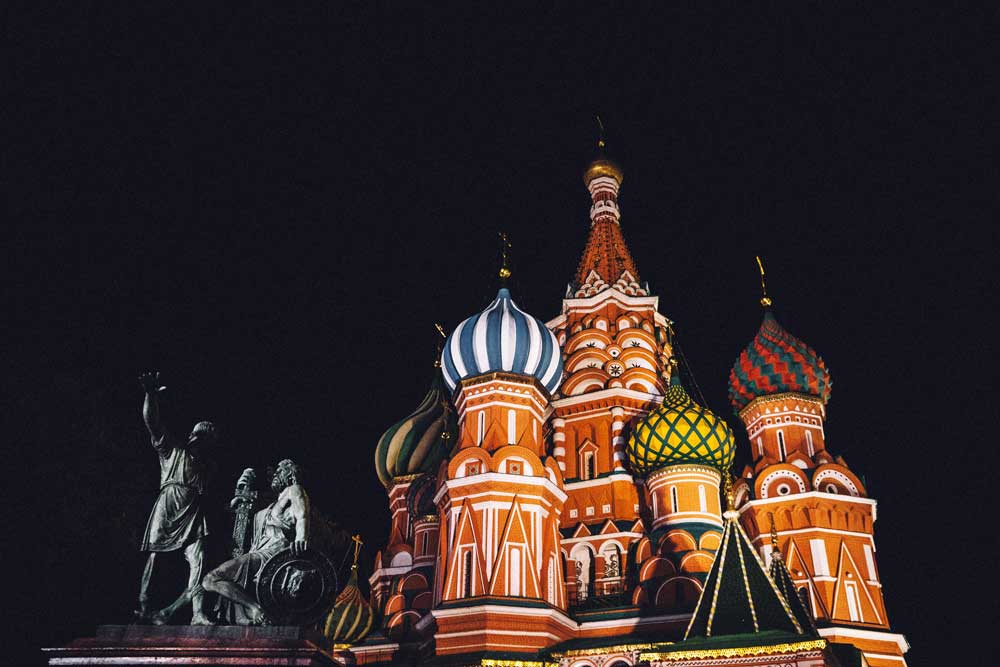
According to chronicles from the time, St Basil’s Cathedral was designed by two Russian architects: Barma and Postnik. They were not blinded, and in fact, went to construct more churches in Russia. But this Cathedral on Red Square remains the most unusual church in Russia and has become an enigmatic symbol of Moscow itself, surviving the Revolution and Soviet times. St Basil’s Cathedral is now a museum, and the interior can be explored. Intimate and atmospheric inside, you can follow a maze of shadowy galleries from one chapel to the next, experiencing the building’s past.
The imposing crimson building on Red Square’s north side is the State Historical Museum. It was constructed to commemorate Russia’s national history and to trace the development of Russia and its people from ancient times to the late 19th century. Its exhibitions include the relics of the prehistoric tribes which once inhabited present-day Russia, as well as priceless artworks owned by members of the Romanov dynasty.
Notable items include a longboat excavated from the banks of the Volga River, gold artifacts of the Scythians, birch-bark scrolls of Novgorod, manuscripts going back to the 6th century, and Russian folk ceramics. The library boasts many ancient manuscripts and the most extensive coin collection in Russia. The total number of objects in the museum’s collection number in the millions.
Another magnificent building accessible from Red Square is GUM. The name GUM is an abbreviation in Russian, which means Main Universal Store and has nothing to do with the chewing gum. However, you can find some in the store, among other goods offered by the market.
Exceptional for Moscow and Russia, The Upper Trading Rows became the most significant passage in Europe at the time. Passages – covered shopping streets – were invented at the beginning of the 19th century in Paris after the Napoleonic wars, inspired by the covered bazaars of the Arab Countries. The oldest one, Passage du Caire, was built in 1799. But these were just covered shopping streets which became stores in the second half of the century. However, GUM has stores at the upper levels with bridges connecting the rows.
In 1917, the trade at GUM was terminated, and goods were confiscated. From then on, the People’s Food Commissariat, which carried out the policy of “food dictatorship”, was located here.
In 1922, Vladimir Lenin decided that the “war communism” policy would not let the Communists be in power and proclaimed the idea of the “long-term coexistence of capitalism and communism.” He began to restore diplomatic relations with the West and announced the NEP – “New Economic Policy.” Stalin closed GUM in 1930 and government ministries and department offices moved in. There was a grocery store facing the street, but in general, GUM ceased to exist. Stalin was going to demolish it twice (in 1935 and in 1947), and government regulations were issued twice, but luckily, the building is still standing today.
When Stalin died on March 5th, 1953, the military budget was reduced by half, and intensive development of agriculture and light industry began. To have space for selling these goods, GUM was renovated and opened to the public in 1953.
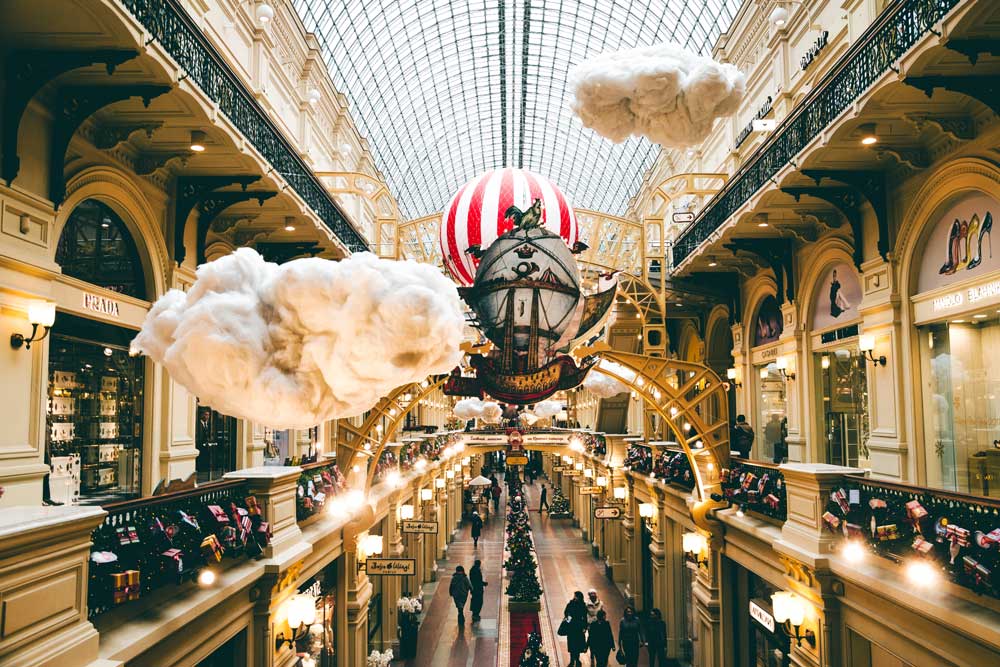
Today GUM is an ideal shopping center of Moscow that seems to exist without the losses and catastrophes from the past 120 years. It is not just a store where you can buy everything, but a central place where there is a pharmacy, a bank, and a flower shop. It has a comfortable lounge area with restaurants and cafes. GUM is also an art gallery and venue for cultural events.
Moscow’s visitors flock to the Red Square to appreciate its beautiful architecture and history. Beyond the square, there are so many places of interest in this beautiful city. If you are visiting Europe, don’t forget to include Moscow to your itinerary and see the Red Square with your own eyes.
